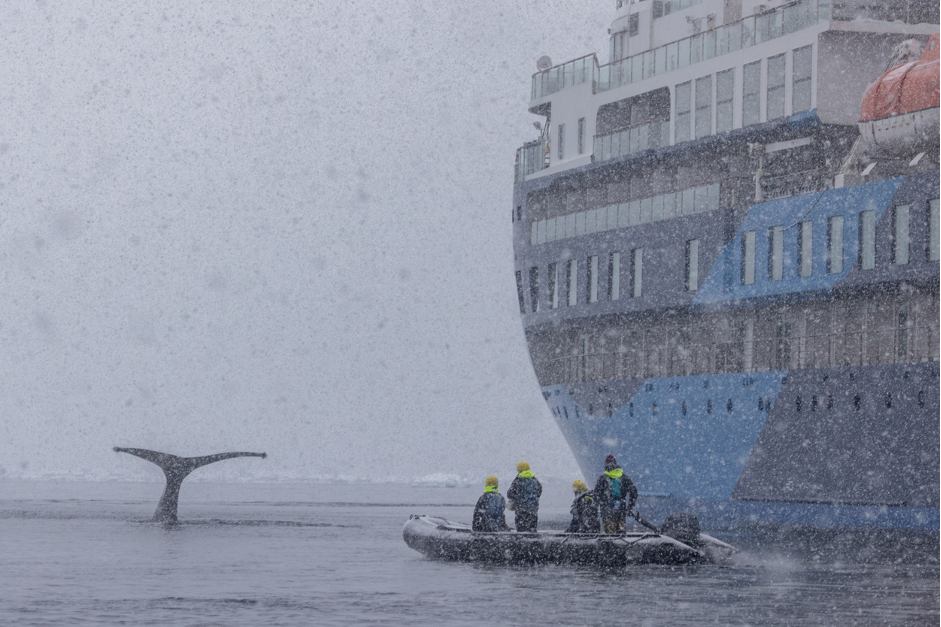Keri Gilder, CEO, Colt Technology Services
When I speak to young people they tell me that they are looking for two main things: 1) a values driven, equitable work environment where all skills and talents are celebrated and they can bring their authentic selves to work; and 2) to be part of an industry which cares about the environment and is working to reduce its environmental impact.
For the past three years, I’ve been open with my concerns about these issues as well. As the talent shortage is reaching a crisis point, particularly across the tech industry, I remain concerned about the long-term impact this will have on innovation, industry, society and the economy. We as leaders in the industry therefore have to tackle both of these issues, if we are to ensure a sustainable future for the communications industry.
Catalysing the link between talent and innovation
The ongoing skills shortage creates barriers against achieving this critical interconnected goal. To what extent does this dilemma validate a reassessment of traditional leadership and cultural models? And how can channel leaders tackle what is perhaps the biggest challenge facing ICT businesses – nurturing a more diverse and inclusive leadership profile and creating a culture that encourages innovation?
We’ve reached a pivotal point in the narrative around the skills shortage. 77% of CEOs1 see the limited availability of key skills as the biggest business threat to company growth. Businesses are worried, with those in the tech industry perhaps the most concerned of all. Tech must accelerate – and deliver – the roadmap for the digital economy; a roadmap to facilitate a connected global society, built on innovation. At the same time, the industry shoulders the responsibility to drive this transition in a sustainable, fair and equitable way. Digital infrastructure is a priority, and ESG credentials top the agenda, but these plans are at serious risk of derailment by one critical factor: access to talent.
In late 2023 I participated in a round table organised by EY and attended by UK Deputy Prime Minister Rt Hon Oliver Dowden MP to discuss topics such as digital inclusion, the UK’s future technology roadmap and the urgent requirement to build sustainable infrastructure and talent for the country to lead in AI and quantum. I was struck by the passion and determination of everyone present to make the UK a technological superpower. One of the key areas our discussion centred around is an ambition to build and promote the UK as a world leader in this area. The need for investment in growth and skills in quantum is fundamental to achieving this goal and will present exciting opportunities for the channel. Acknowledging and investing in the skills gap is a critical first step.
Demand outstrips supply – skills are just not growing at the same pace as disruptive tech. Businesses won’t be able to innovate or compete; they will be unable to deliver what they need to in order to grow. One study2 found 84% of businesses questioned are being held back from delivering major cloud projects, due to a lack of skilled tech talent to support their goals, while just one in ten workers have the skills in AI that are in-demand, according to Salesforce3.
It isn’t just tech talent that’s in demand: 77% of CEOs say they are struggling to find the innovation and creativity skills they need for their businesses. Which leads to the obvious question: why? Why are they finding it so hard? The post-Covid Great Resignation and boom in hybrid roles should have opened up the market to a pool of talent unconstrained by geographic borders. But this hasn’t happened at the pace we expected. Some leaders are still readjusting, unfamiliar and uncomfortable with new working models. Some organisations are still not set up operationally to deliver a remote employee experience that replicates a traditional workplace experience. Businesses that had built strong cultures based on being present in a traditional workplace were forced to rethink what mattered most.
What the next generation want
In hiring for the tech channel, we must start by bridging the gap between what companies have to offer, and what job seekers actually want. Despite the wave of excitement the tech industry continues to ride – buoyed by the AI and metaverse buzz – job seekers need more than promises of flashy offices with beanbags before they commit to a role.
Today’s candidates actively search for businesses whose values align with their own. They seek businesses where difference is celebrated; where commitments to diversity, equity and inclusion are not just goals but are part of an organisation’s DNA. LinkedIn found that 59% of respondents in Europe wouldn’t work for an organisation that did not share their values. A Glassdoor study4 found 32% of job seekers would not apply for a job at a business they felt didn’t show a commitment to diversity and inclusion. Diverse companies are proven to outperform others; to deliver a better customer experience and see greater levels of innovation. Employees are more engaged, and retention levels are higher.
Holding on to talent
Narrowing the skills gap must reach far wider than the hiring stage. Stopping talent leaving the industry is a huge challenge. People with disabilities report being shut out of the industry, facing barriers to successfully delivering their roles from physical accessibility to a lack of access to supportive technologies. 60%5 of women in tech have considered leaving the industry. 35%6 of workers feel ‘too old’ for the industry and 71%7 of young people in tech say their gender, ethnicity, socio-economic background or neurodiversity has made them feel uncomfortable at work.
The importance of fairness and equity
It has never been more important, morally or economically, to create a fair and equitable workplace where everyone can thrive. We must take action to remove bias; set goals and report progress; invest in internal mobility and commit to a culture of learning. Change starts at the top, and we have to create leadership teams reflective of broader society. We need greater collaboration across the industry; we must forge deeper connections between government, education and business; and we must deliver against our duty of care, to support and nurture our employees at every stage of their career.
We’re on the cusp of a new digital age which presents incredible opportunity. Right now, the onus falls on tech leaders, government and educators to come together to build the skilled, diverse and equitable workforce of the future.
Finding workable solutions
Of equal importance to the digital generation is finding workable solutions to the climate crisis. What can we tell them about how we are working to rescue the environment and build a sustainable industry? Everyday we are faced with very inconvenient truths and the stories in the media seem to get worse, with no clear solutions in sight.
So what if….we do nothing?
The temperature rises 2 degrees. Extreme weather starts impacting the global economy. Critical infrastructure, including communications infrastructure is disrupted.
Too often we seem to set aspirational goals but do the bare minimum to actually achieve them. What if, as industry leaders:
- we sign up to science based targets, but hit them in 2040
- we offset our energy use, but don’t actually reduce it
- we distribute the responsibility to our teams, but don’t hold ourselves personally accountable?
Well, I can tell you first hand, it’s not good. These are pictures from two of my employees in Antarctica – where it rained.
We sent them down there with a sustainable exploration team to find out what really was going on. They learned that 10.8billion tonnes of ice has melted since 1992. And in March of last year – roughly around the time my team was there, the temperature spiked to an astronomical level and has never come back down.
It may be hard for everyone to relate to Antarctica – unless you have been there like my Colties, but I bet you can relate to a paper towel. Not surprising, given the average person uses around 3,000 paper towels at work in a given year.
In my house, you could probably double that – we use them for everything! Cleaning countertops, wiping down cats, picking up spills on the floor, even covering our food in the microwave. And like most of us, I really didn’t think much about them until recently. But after I started learning about climate change, we had a challenge at Colt. We had a hack-a-thon to come up with ideas on how to be a part of the climate solution, in our professional AND personal lives. From this hack-a-thon, I learned ways to live more ‘green’ .I purchased bar soap and shampoo.
I started using sustainable toilet paper. I even bought sustainable cat litter. And for the most part, this was all pretty easy.
Until it came to the paper towel. We just couldn’t get our heads around it. Putting a cloth towel over our food in the microwave seemed weird. Using a cloth to wipe the dirt off my cats seemed weird. My kids would even ask, “Mom – what do I do with the cloth afterwards?” because they were so used to throwing it away. Changing the paper towel to cloth itself was not that hard – it was just a purchase on Amazon.
Changing the mindset of my family – that was really hard. The disruption it made in our daily habits was huge. What I realized is that climate change is not about WANTING to do the right thing. It is about ACTUALLY doing it. Even when it is hard.
Why am I so focussed on what seems a minor issue, like paper towels? Because paper towels are the biggest waste coming out of US homes according to the Environmental Protection Agency. They contribute to the deforestation of 110 million trees. If each US household reduced their annual use by just 3 rolls of paper towels per year we could eliminate 120,000 tons of waste. I am not trying to make everyone feel bad about their paper towel use (well, perhaps a little). But what this shows is that we need to talk more openly about changing behaviour, changing the mindset across our industry.
Changing the industry’s mindset
Climate change isn’t about putting some ambitious goals on a powerpoint. It’s about changing behaviour. It’s about changing our mindset from what is “normal” – whether it is a paper towel or a process to remove legacy equipment. It’s changing our behaviour from doing what is “easy” in the short term but creates a false economy in the long term.
At Colt, we have changed out MANY “paper towels”. We have enabled a “green mindset”. We have changed our behaviour, our thinking in how we engineer our networks, how we work with suppliers, how we procure our power, how we develop our products. We have changed our minds to a “new normal”. And by doing this we have achieved a Platinum rating by Ecovadis. We are the only telecoms provider to achieve this rating.
We achieved this by holding everyone accountable – our employees, our partners, our suppliers. We set achievable targets in each area of our business and put sustainability and customer experience at the heart of everything that we do. We “DID SOMETHING” in every part of our business even if it was hard to change our habits.
Sustainable digital infrastructure – what we mean
At Colt, we’ve demonstrated that we are committed to sustainable infrastructure across the entire value chain: through reducing emissions by using sustainable energy resources, refurbished hardware components and incorporating end-of-life processes which promote circular economy principles.
In designing network architecture for the future, we integrate specific measures, features and capabilities which are built on – and contribute to – our commitments to sustainable digital infrastructure. This way, customers and partners benefit from innovative, powerful next generation network design with minimal environmental impact.
These measures include:
- Network Optimisation: updating of equipment in line with technological advancements to increase data transport capacity while maximising efficiency of assets.
- Promoting circular economy principles: t purchasing of refurbished equipment to extend the life of equipment where possible –
- 14,739 pieces of high-quality secondhand equipment bought in 2021 and 2022
- 75,452 pieces of equipment reused in 2021 and 2022
- Estimated 22.6 tonnes of e-waste avoided over a 5-year period (i.e. avoided materials being dug up and refined due to remanufactured equipment kept in use)
- Introducing bio diesels for back-up generators
- Working towards zero waste to landfill – making a concerted effort to ensure all our waste is prevented where possible, reused, recycled or converted into usable energy. This includes waste from our network equipment, IT equipment, office equipment and our supply chain.
- SDH End of Life programme (not including migration of customers to other products) will see a reduction in power over 5 years (includes: 30,000+ devices, 32 TDM Switches, 11,000 sites, 135,000 circuits, 13 countries)
- 1st year is 2023 which should see a reduction of 14.2GWH and we have already achieved 3.84GWh/ year reduction (not including cooling reduction)
- Optical network evolution sees a 5900% increase in bandwidth with an 81% decrease in power and a 99.4% decrease in space
- Ethernet network evolution sees a 771% increase in bandwidth and a 91% reduction in power and 99% reduction in space
As AI comes to the forefront of our industry, and according to DeepMind, computing power is doubling every 3.5 months. It is an imperative for the industry to think differently. We are estimated to consume more energy than the transportation sector in just a few years. We are quickly becoming the PRIMARY problem for the planet.
So the question to you is not
What If….
The question is WHAT?
What are you going to do about it?
What are you going to do to change the way you work, day to day? What are you going to do to change the mindset of your people? What is your “paper towel?”
- https://www.pwc.com/gx/en/ceo-survey/2017/deep-dives/ceo- survey-global-talent.pdf ↩︎
- https://www.cloudthat.com/resources/blog /the-tech-talent- shortage-its-impact-on-businesses-and-the-solution
↩︎ - https://www.salesforce.com/news/stories/digital-skills-based- experience/#:~:text=Artificial%20Intelligence-,New%20Study%20Reveals%20 Only%201%20in%2010%20Global%20Workers%20Have,education%20 qualifications%20or%20career%20background. ↩︎
- https://www.glassdoor.com/employers/blog / diversity/?nabe=6392912005562368:1
↩︎ - https://www.businessleader.co.uk/most-men-but-only-a-quarter-of- women-think-women-have-equal-progression-opportunities-in-tech/
↩︎ - https://www.cwjobs.co.uk/advice/ageism-in-tech-press-release
↩︎ - https://peopleofcolorintech.com/break-into-tech/young-black- people-are-leaving-tech-because-of-bad-culture-study/ ↩︎
Keri Gilder is the Chief Executive Officer (CEO) at Colt Technology Services since May 2020. She is responsible for executing Colt’s strategy which centres around transforming the way the world works through the power of the digital universe.
Before becoming CEO, Keri was Colt’s Chief Commercial Officer (CCO), leading global teams across sales, presales and marketing, as well as working closely with the wider organisation to ensure Colt delivered for its customers.
Before joining Colt, Keri held several leadership roles at Ciena but was most recently its Vice President and General Manager EMEA, responsible for guiding Ciena’s EMEA service provider and enterprise customers, as well as partners.
Keri is passionate about promoting Inclusion and Diversity to ensure Colt is a business where everyone feels they can bring their true selves to work. In addition, Keri brings this passion to the wider industry as the Chair of the TM Forum’s Diversity & Inclusion Council and President Emeritus of the Global Telecom Women’s Network.






